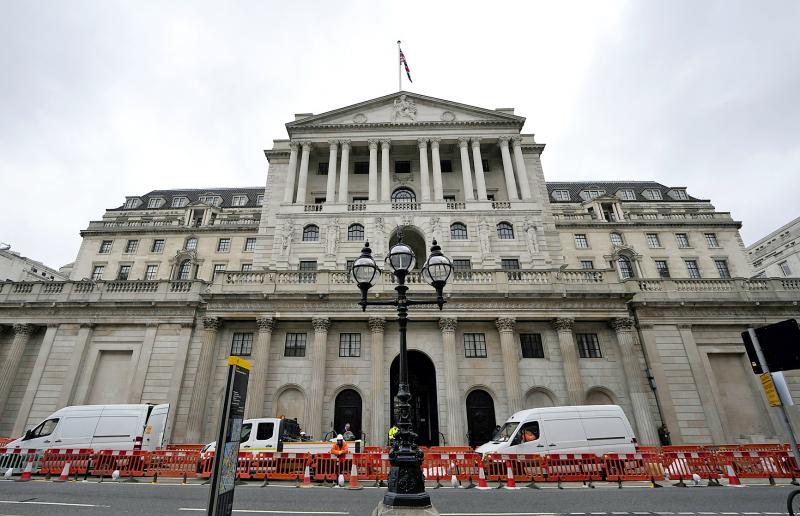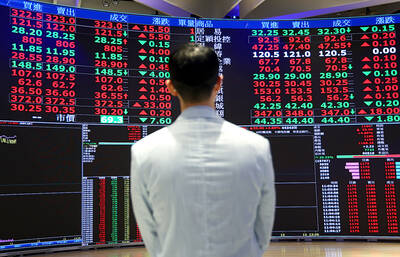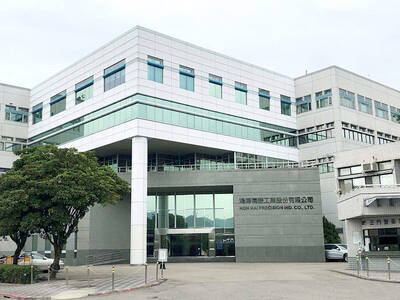High above the Bank of England, a weather vane tracking the wind direction connects directly to a dial in the stately building’s Court Room. In the 1800s, the bank’s directors met there and knowing which way the wind was blowing was crucial. An easterly breeze meant that ships, loaded with commodities such as copper and wheat, would be sailing up the Thames River to offload their cargo, affecting demand for money in the City of London. Westerly winds meant the opposite.
The weather vane is still there, but central banks have largely lost their mastery over the link between commodity markets and monetary policy. With booming raw materials markets driving the fastest inflation in decades, that is a big problem. As a result, forecasting inflation this year has become more art than science. What would be the Saudi Arabian king’s response to US pressure to boost oil production? What is Russian President Vladimir Putin going to do with Europe’s gas supply? How will Beijing react to record-high coal prices?
Perhaps that is beyond the expertise of any central banker. Instead, most of them rely on rather unsophisticated tools to incorporate commodity markets into their models. Worst is their mechanical use of the futures curve for inflation forecasting. The futures curve is not a forecast of where commodity prices are heading, but rather a snapshot of what the market is willing to pay today for delivery in the future.

Photo: AP
That is one of the reasons that the US Federal Reserve, the European Central Bank and others got inflation wrong last year. They assumed, looking at the shape of the price curves, that the worst of the commodity price increases were behind them. Inflation, therefore, was “transitory.”
Wrong. Central banks themselves are aware of the shortcoming. In 2012, the Bank of England published a paper about its troubles incorporating oil prices into its inflation modeling: “Despite the theoretical link between the futures curve and expected spot prices, the futures curve has not been a very good guide to predicting future spot prices, failing to predict the upwards trend in prices between 2003 and 2008 as well as the collapse and recovery in oil prices since then.”
Yet, in the very same study, the authors argued that the bank should continue using the futures curve for its forecasts. One reason? It is easier.
Today, the Bank of England assumes that, for the first six months of this year, energy prices would follow the futures curve, and after that stay constant.
In a tight market, as we have today, the shape of the futures curve is particularly misleading as a forecast. Take oil: The curve today is a steep downward slope — something called backwardation. That shape means buyers are willing to pay a premium for scarce barrels for immediate delivery.
However, the downward slope does not mean that oil prices are due to fall. It is just an indication of present demand.
For the Brent oil market, the price difference between the contract for delivery in April and the forward contract for December is US$10 a barrel. A central bank might interpret that as a sign that Brent crude is due to drop from US$95 to US$85 a barrel from now to the end of the year, a harbinger of weaker inflation.
Ask any physical commodity trader and they will tell you how wrong that is. If central banks require a mechanical way to incorporate commodity price futures into their thinking, the options market offers a better alternative: The price difference between bullish and bearish options contracts — known as the put-call skew in the jargon — gives a better sense of what the market thinks is the balance of price risk. The options market right now is signaling that, on balance, prices might be higher in the future, not lower.
Which brings us back to the question of expertise.
The major central banks have legions of economists who honed their chops in an era of unconventional policy: negative interest rates and quantitative easing. The focus of inflation modeling this century has been centered on prices excluding food and energy, removing the economy’s volatile elements. That is precisely the opposite of what we need now. Mathematical modeling of the latest economic theory might have its uses, but simple commodity demand exceeding supply does not need extra bandwidth — it needs experienced eyes and ears on the ground.
Central bankers need intelligence about commodity markets. Outside the Fed, which has a network in the oil and agricultural industries thanks to its regional banks in Kansas City, Missouri, and Dallas, Texas, few other central banks knows much about what is really going on in energy, metals and agricultural markets.
If they want to get inflation right this year, central bankers should abandon their complex mathematical models and ask oil companies, miners and farmers what is going on. They are likely to be surprised.
Javier Blas is a Bloomberg Opinion columnist covering energy and commodities. He was previously commodities editor at the Financial Times and is the coauthor of The World for Sale: Money, Power, and the Traders Who Barter the Earth’s Resources. Marcus Ashworth is a Bloomberg Opinion columnist covering European markets. He spent three decades in the banking industry, most recently as chief markets strategist at Haitong Securities in London.
This column does not necessarily reflect the opinion of the editorial board or Bloomberg LP and its owners.

Shares in Taiwan closed at a new high yesterday, the first trading day of the new year, as contract chipmaker Taiwan Semiconductor Manufacturing Co (TSMC, 台積電) continued to break records amid an artificial intelligence (AI) boom, dealers said. The TAIEX closed up 386.21 points, or 1.33 percent, at 29,349.81, with turnover totaling NT$648.844 billion (US$20.65 billion). “Judging from a stronger Taiwan dollar against the US dollar, I think foreign institutional investors returned from the holidays and brought funds into the local market,” Concord Securities Co (康和證券) analyst Kerry Huang (黃志祺) said. “Foreign investors just rebuilt their positions with TSMC as their top target,

H200 CHIPS: A source said that Nvidia has asked the Taiwanese company to begin production of additional chips and work is expected to start in the second quarter Nvidia Corp is scrambling to meet demand for its H200 artificial intelligence (AI) chips from Chinese technology companies and has approached contract manufacturer Taiwan Semiconductor Manufacturing Co (TSMC, 台積電) to ramp up production, sources said. Chinese technology companies have placed orders for more than 2 million H200 chips for this year, while Nvidia holds just 700,000 units in stock, two of the people said. The exact additional volume Nvidia intends to order from TSMC remains unclear, they said. A third source said that Nvidia has asked TSMC to begin production of the additional chips and work is expected to start in the second

REVENUE PERFORMANCE: Cloud and network products, and electronic components saw strong increases, while smart consumer electronics and computing products fell Hon Hai Precision Industry Co (鴻海精密) yesterday posted 26.51 percent quarterly growth in revenue for last quarter to NT$2.6 trillion (US$82.44 billion), the strongest on record for the period and above expectations, but the company forecast a slight revenue dip this quarter due to seasonal factors. On an annual basis, revenue last quarter grew 22.07 percent, the company said. Analysts on average estimated about NT$2.4 trillion increase. Hon Hai, which assembles servers for Nvidia Corp and iPhones for Apple Inc, is expanding its capacity in the US, adding artificial intelligence (AI) server production in Wisconsin and Texas, where it operates established campuses. This

Garment maker Makalot Industrial Co (聚陽) yesterday reported lower-than-expected fourth-quarter revenue of NT$7.93 billion (US$251.44 million), down 9.48 percent from NT$8.76 billion a year earlier. On a quarterly basis, revenue fell 10.83 percent from NT$8.89 billion, company data showed. The figure was also lower than market expectations of NT$8.05 billion, according to data compiled by Yuanta Securities Investment and Consulting Co (元大投顧), which had projected NT$8.22 billion. Makalot’s revenue this quarter would likely increase by a mid-teens percentage as the industry is entering its high season, Yuanta said. Overall, Makalot’s revenue last year totaled NT$34.43 billion, down 3.08 percent from its record NT$35.52